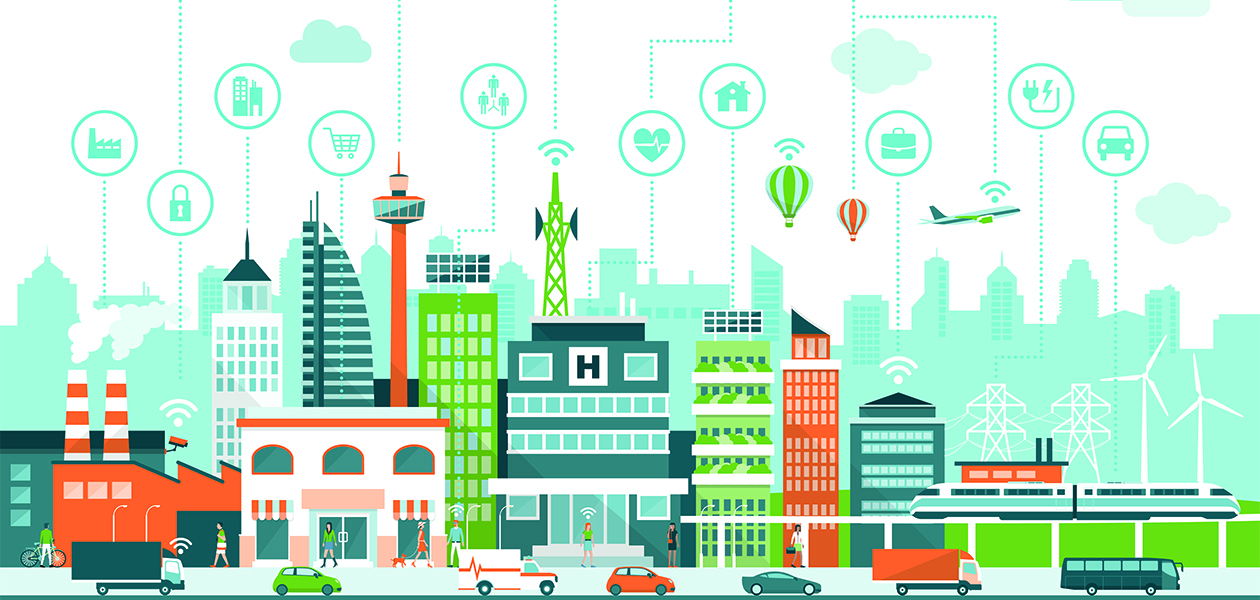Hardware, heartware and partnerships will future-proof Singapore’s industries
Find out how Singapore’s construction, electronics, and energy and chemicals sectors are being transformed to meet the demands of the future economy.
Keeping pace with a rapidly evolving global economy means forecasting ahead and constantly challenging the status quo. By planting the seeds of progress in the present day, countries can better position themselves to flourish in the future.
Recognising the need to future-proof its key industries, the Singapore government has set aside S$4.5 billion to carry out its Industry Transformation Programme, which spans 23 different industries that, cumulatively, account for more than 80 percent of Singapore’s gross domestic product (GDP).
From September to December 2017, Industry Transformation Maps (ITMs) for the construction sector, the electronics sector, and the energy and chemicals (E&C) sector were launched, bringing the total number of ongoing ITMs to 15.
Building the foundations of progress
For any transformation to occur, the hardware to support fundamental change must be present. In the construction industry, this means establishing prefabrication hubs—factories where building components are manufactured off-site before being transported to the actual construction area and pieced together, like Lego bricks, to form a complete structure.
Prefabrication not only enables greater automation of the construction process, but also reduces the time to completion of construction projects, thereby raising the productivity of this industry. Three of such prefabrication hubs are currently in operation, with up to seven more planned leading up to the year 2020.
Similar enabling facilities are being built for the electronics industry, taking the form of manufacturing facilities that meet the stringent operational requirements of the semiconductor industry. Key infrastructure such as automated cleanrooms, vibration-controlled spaces, cooling mechanisms and industrial gas supply systems will be developed so that local and global companies can simply plug-and-play when setting up their operations. The nanoSpace, located within the Tampines Wafer Fabrication Park, is an example of such a facility.
The infrastructure for the E&C industry is also slated for an upgrade with advanced manufacturing technologies. By 2020, robotics and industrial Internet-of-Things (IoT) will be integrated into various stages of the value chain of 20 E&C plants, including all existing refineries and crackers. This will improve the efficiency of processes and free up manpower for more complex tasks.
People at the heart of change
In addition to upgrading the hardware, updating the heartware—or people—is essential if Singapore is to thrive in the future economy. As jobs evolve in tandem with industry transformation, so must education and training in the construction, electronics and E&C sectors.
To equip the Singapore workforce with the relevant skillsets to take on both existing and new jobs, structured professional development pathways across all stages of career maturity are necessary, ranging from pre-employment and early job training to continuing education and training.
Government-led initiatives such as the SkillsFuture Earn and Learn Programme, Enhanced Internship, Singapore Industry Scholarships and Professional Conversion Programmes (PCPs) will allow not only fresh graduates, but also mid-career workers to participate and excel in the future economy.
As part of the ITMs, each industry has also come up with a Skills Framework detailing the type of job roles that will become available, as well as the competencies required to assume those roles. For example, in the electronics industry, 2,100 new professionals, managers, executives and technicians (PMET) jobs are expected to be created by 2020. Some of the technical proficiencies that will be required include artificial intelligence, IoT, data analytics, and robotics and automation.
Teaming up for success
There is an African proverb that says, “If you want to go fast, go alone. If you want to go far, go together.” For Singapore to remain globally competitive in the long run, deep partnerships between the public and private sectors are crucial.
For the construction sector, the Building and Construction Authority and Housing & Development Board have launched an innovation call on using drones for building façade inspection. This is supported by the Partnerships for Capability Transformation through Government Lead Demand initiative (Gov-PACT). For the electronics sector, the Singapore government is working closely with Trade Associations and Chambers, including the Singapore Semiconductor Industry Association, to facilitate in the nurturing of new talent. Meanwhile, the Singapore Chemical Industry Council is teaming up with the Economic Development Board to oversee labour supply, training and hiring practices in the E&C industry.
While industry standards and manpower needs are important, it is equally critical to create a culture of open innovation, where enterprises large and small look beyond their four walls for actionable ideas to improve their products and processes.
This is where IPI Singapore comes into play, serving as a connector between technology seekers and providers. As a member of the tripartite consortium, Enterprise Europe Network Singapore, IPI can even help businesses seek innovation partners abroad, from 52 countries. Open innovation also creates jobs and facilitates internationalisation of companies, fitting nicely with the objectives of the ITMs.
From hardware to heartware, ITMs in the construction, electronics, and E&C sectors are setting the scene for Singapore’s future. IPI is playing an integral role in the transformation of these three sectors by facilitating synergistic developments for medium- to long-term impact.

